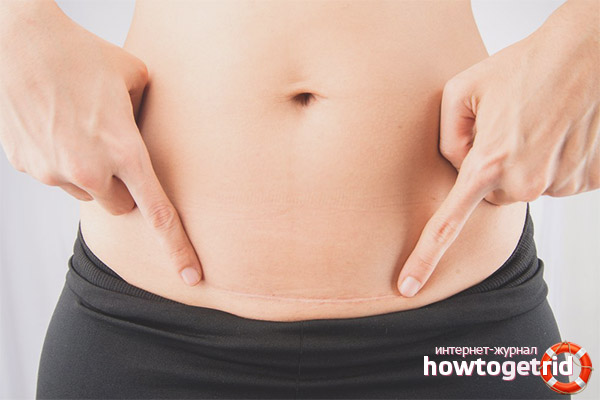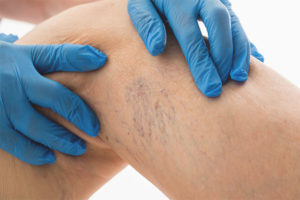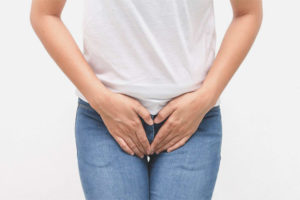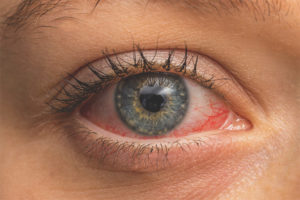The content of the article
The appearance of the baby is not only happiness, but also some testing for the mother, since in the first month you need to adapt to your new status and help your body recover from childbirth. If a cesarean section was used, special attention should be paid to the seam, namely the quality and method of its processing. The better the care will be carried out, the faster the wound will heal, the likelihood of various kinds of complications will decrease.
First week after childbirth
Immediately after the operation, the medical staff takes care of the suture. Usually processing takes place in the morning, sometimes evening hours. The process includes a visual examination of the scar to assess the dynamics of healing, if necessary, washing the wound, applying an antiseptic. The dressing changes daily, depending on the degree of wetting of the scar, the frequency of application is determined.
While the maternity hospital took upon itself the responsibility of treating the suture after cesarean section, the young mother needs to monitor intimate hygiene, eliminate sudden movements, and serious physical exertion. After obstetric aid by surgery, the woman is in the medical facility for 5-7 days, provided that there are no complications and pathologies. Before discharge, stitches are removed, if non-absorbable sutures were used, the doctor gives recommendations for the care of the scar.
How to care for a seam at home
Properly taking care of a scar that has not yet healed is easy on your own, the main thing is to do it regularly. The list of procedures necessary for a quality and speedy tightening of the joints after cesarean section includes the following care rules:
- Regular hygiene;
- Basic seam processing
- Limitation of physical activity.
- LFK or special gymnastics;
- The use of products that facilitate the postpartum period.
The above rules are generally accepted; upon discharge, the doctor should inform them, focusing on the importance of their implementation.
Hygiene
Despite the great desire to take a bath after the hospital, you do not need to do this, only a shower is allowed. If the sutures were removed immediately before discharge, it is recommended to wait a day or more until the scar is tightened. Soaking a wound increases the risk of developing bacteria, infection, which is extremely undesirable.
Often you do not need to wash the operation site, rub and use unverified cosmetics also should not. You can apply baby and household soap with light movements around the scar or use products specially designed for this purpose.
Basic seam processing
Since the main goal is to prevent infection from entering the scar surface, it is necessary to treat the suture with antiseptic and antibacterial solutions daily. These can be classic options - brilliant green, hydrogen peroxide, iodine. Means and to date have not lost their relevance and are used to disinfect wounds of various origins.
If the healing dynamics is positive, you only need to exclude the conditions for the spread of bacteria. For this, you can consider such solutions as Miramistin, Chlorhexidine, Fucortsin, Dimexide.
For the treatment of sutures, the doctor can prescribe special ointments with a broad antibacterial effect, with a healing effect. These may be the following drugs:
- Levomekol. Ointment has an antibacterial effect, helps with suppuration of wounds, relieves inflammation. Refers to antibiotics, consult a doctor if the baby is breast-fed.
- Solcoseryl. Stimulates regenerative reactions of cells, activates metabolic processes in tissues. A gel or ointment will help speedy healing, reduce the marks of scar.
- Agrosulfan. It has an analgesic effect, disinfects, eliminates the accumulation of bacteria.
- Levosin. The drug has a complex effect, the composition allows you to fight a variety of infections, promotes cell regeneration, anesthetizes.
- Vishnevsky ointment. It is applied under a bandage, it is prescribed mainly for suspicions or development of suppuration.
- Eplan. A universal remedy that helps prevent the spread of infection, relieve discomfort. The treated seam will heal faster, if there are inflamed areas, the active substances of Eplan will neutralize them, as well as moisturize and soothe the skin.
- Contractubex. It is used as an anti-inflammatory agent, improves cell renewal, which helps to tighten the scar. The composition contains onion extract.
There are many preparations for suture treatment, but it is better to choose them after consulting a doctor. If an independent selection of drugs is carried out, then you should pay attention to the composition and contraindications. This is important not only for successful treatment, but also if a woman is breast-feeding a baby.
Seam Processing Steps
If you choose what to process the seam after cesarean section and this process is carried out for the first time independently, then you can follow the following steps:
- Removing the dressing. This is done neatly and without sudden movements. In the case of adhesion of the material to the wound, you can moisten this area with hydrogen peroxide, the bandage will come off and detach painlessly.
- Profuse peroxide wetting; sometimes it is advisable to use chlorhexidine. If the seam is inflamed, there are signs of pus or other warning signs have appeared, then you should consult a doctor as soon as possible.
- With a bandage or a special medical gauze cloth, the remaining solution is removed.
- At the edges of the seam or on its surface, depending on the antibacterial agent used, the drug is applied.
- A new dressing is applied.
Such manipulations in the first few weeks after cesarean section are performed twice a day, then one is enough. With the formation of a scar, complete healing of the wound, you can use drugs that stimulate the natural regeneration of tissues so that the scar is less noticeable. The resulting crusts can not be specially torn.
Additional measures for healing sutures
In addition to observing the rules of hygiene, treating wounds after surgery, it is necessary to exclude the possibility of divergence of sutures. For this, weight lifting and physical stress are limited, including attempts to go to the toilet for constipation.
After cesarean section, the use of special supporting underwear, bandages is recommended. After a few weeks, if a good scar has already formed, you can gradually proceed to light gymnastics, which strengthens and restores the abdominal muscles.
Not only the physical, but also the moral well-being of the young mother depends on the quality of the suture treatment after cesarean section. Although many women find it difficult to adapt to new responsibilities after childbirth, one should not underestimate the importance of proper care for a postoperative wound. Immediately after the hospital, you need to purchase all the necessary drugs for treatment, use them regularly and according to the instructions.
Video: postoperative suture treatment










Submit